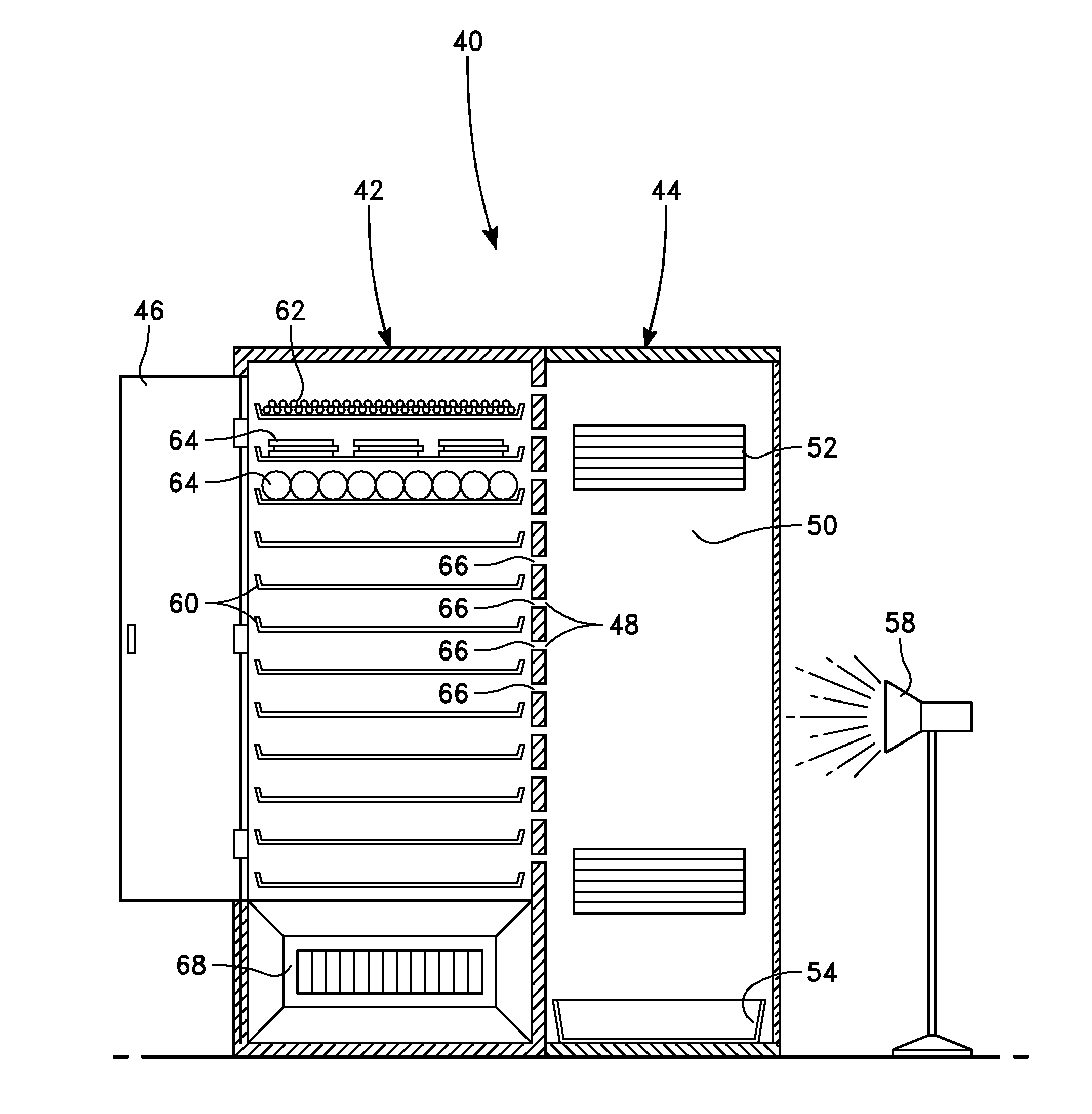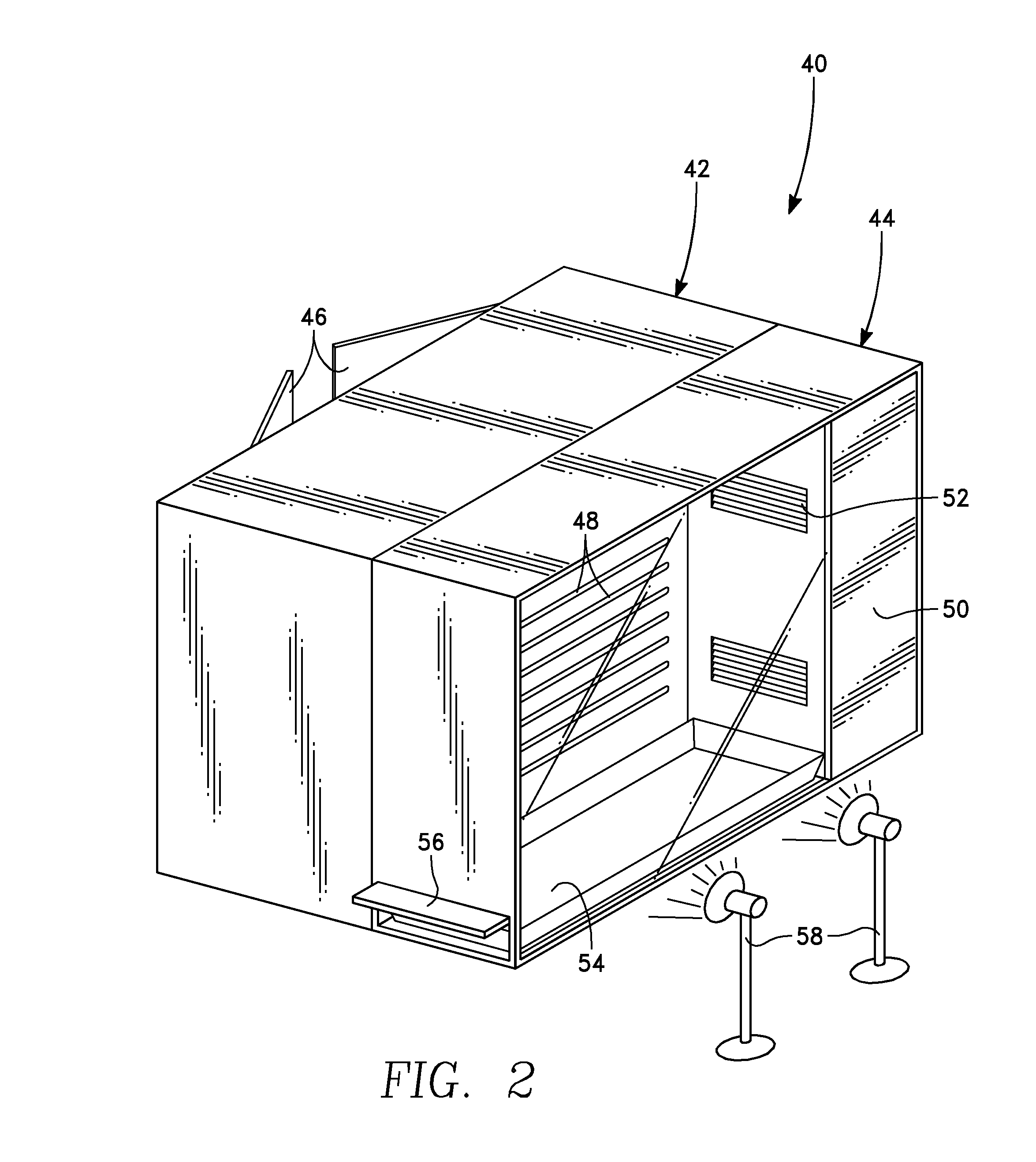Method and apparatus for improving the utilization of solitary bees for pollination of crops
a technology of solitary bees and crop pollination, applied in the field of crop pollination by bees, can solve the problems of insufficient precision in the application of degree-day modeling to the management of solitary bees, difficult to predict with accuracy what percentage of males and females are present, and difficult to remove emerged bees. , to achieve the effect of efficient utilization of bees, accurate control of emergence, and convenient removal
- Summary
- Abstract
- Description
- Claims
- Application Information
AI Technical Summary
Benefits of technology
Problems solved by technology
Method used
Image
Examples
Embodiment Construction
[0061]FIG. 1 shows a section of a typical nest 30, which may be natural (e.g., a reed) or artificial (e.g., a cardboard tube) containing both female 32 and male 34 cocoons. It should be noted that the sequence of sexes of the bees as shown is typical, i.e., the first eggs laid (at the base 38 of the nest) are females, and the ones nearer the entrance 39 are male. Each cell is formed by a seal 36 which the mother bee constructs, typically of mud, but different species use different materials.
[0062]Nests may alternatively be formed in solid blocks of material, for example, by drilling as described in Cane J, Veirs D and Trostle G, 2003, “How To Build A Nesting Block” USDA-ARS-NPA, Bee Biology And Systematics Laboratory, Logan, Utah, www.loganbeelab.usu.edu. Wood is commonly used as the block material. However, blocks complete with cavities may also be moulded from plastic. Similar to tube nests, additional liners have previously been provided to improve removal and examination of the ...
PUM
 Login to View More
Login to View More Abstract
Description
Claims
Application Information
 Login to View More
Login to View More - R&D
- Intellectual Property
- Life Sciences
- Materials
- Tech Scout
- Unparalleled Data Quality
- Higher Quality Content
- 60% Fewer Hallucinations
Browse by: Latest US Patents, China's latest patents, Technical Efficacy Thesaurus, Application Domain, Technology Topic, Popular Technical Reports.
© 2025 PatSnap. All rights reserved.Legal|Privacy policy|Modern Slavery Act Transparency Statement|Sitemap|About US| Contact US: help@patsnap.com



